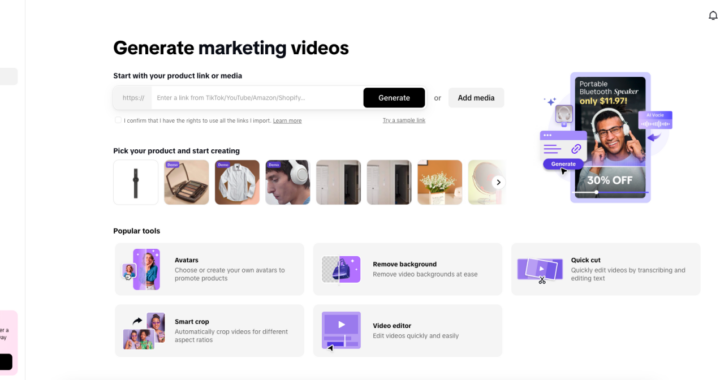Using ZTNA to Manage Remote Access to Cloud-Based DevOps Tools

DevOps pipelines once ran inside a single data center where network segments and firewalls provided a hard shell around source control and build agents. Now, cloud-hosted platforms such as GitHub, GitLab, Jenkins, and managed Kubernetes clusters sit on the open internet, ready for use by developers spread across time zones.
Each engineer, contractor, or automation bot requires quick access to repositories, container registries, and deployment scripts, yet any misplaced credential can expose intellectual property or production infrastructure.
Most teams still rely on full-tunnel VPNs. A developer authenticates, receives broad network reach, and can then move laterally intentionally or accidentally through staging environments, secrets stores, or billing systems. If a laptop is compromised, attackers inherit the same privileges. Because VPNs treat the network as the trust boundary, they cannot apply granular, per-application restrictions without complex firewall rules and segmented subnets. For fast-moving DevOps organizations, that rigidity conflicts with the need to spin up test clusters or CI runners on demand.
What Zero Trust Network Access Brings to the Table
Zero Trust Network Access (ZTNA) flips the implicit trust model around a single principle: verify everything, every time. Instead of granting access to an entire subnet, a ZTNA broker evaluates user identity, device posture, geolocation, and time of day for each request, then creates a micro-tunnel only to the specific service required, nothing more. When the session ends or the risk posture changes, the tunnel closes automatically.
Unlike VPNs, which expose internal IP addresses, a broker presents applications through unique DNS names or cloud front-ends that hide origin infrastructure. Developers never “see” the GitLab runners or Kubernetes API server addresses; they reach them through authenticated, purpose-built pathways. Because those pathways rely on outbound connections from protected services, administrators do not punch inbound firewall holes or publish load balancers to the public internet.
Continuous verification is built in. If a device drifts out of compliance, say, disk encryption is disabled, or the latest endpoint-detection agent is missing, the broker revokes the session silently. Conditional-access logic, typically sourced from identity platforms such as Okta or Azure AD, lets security teams adapt requirements per project or data sensitivity.
How ZTNA Protects Cloud-Based DevOps Tools
Granular Application Access
A front-end developer needs GitHub pull-request capability and access to a staging container registry. Under ZTNA, the broker maps that role to two destination identifiers. No route exists to production infrastructure, monitoring back-ends, or finance dashboards. Even if an SSH key leaks, the attacker can touch only those limited services, greatly shrinking the blast radius.
Continuous Verification
CI/CD pipelines often run unattended. With ZTNA, a build agent receives a short-lived token tied to its workload identity and host fingerprint. Every artifact uploaded to an S3 bucket or Docker registry renews that token. Should an attacker hijack the container, they still need to pass device posture checks, which is impossible without the original signed workload certificate.
Encryption and Auditing by Default
All micro-tunnels leverage TLS 1.3 or mutual TLS for confidentiality. The broker logs each connection’s origin, device ID, requested resource, and policy result, fulfilling SOC 2 or ISO 27001 evidence requirements. When auditors ask how code promotion servers remain segregated from credential vaults, security teams can produce timestamped session records rather than vague VPN syslogs.
Integration With Kubernetes and IaC
Modern brokers deploy lightweight sidecars or daemon sets inside clusters. These components register cluster API servers and service mesh gateways with the control plane. When a developer initiates a kubectl command, the ZTNA client dials the sidecar over a micro-tunnel, authenticates via OAuth, and relays only the allowed namespace operations. Infrastructure-as-code tools can, therefore, create or destroy environments without exposing open ports to the internet.
Benefits Specific to DevOps Workflows
Reduced Risk – Limiting each user or automation token to the narrow set of required DevOps functions eliminates most lateral movement vectors.
Compliance Alignment – Fine-grained access maps neatly to least-privilege mandates in frameworks like NIST 800-53.
Higher Productivity – Developers bypass bulky VPN connections and context switches.

Single sign-on provides seamless entry from any location with consistent latency.
Actionable Visibility – Every push, merge, and deployment call passes through the broker, feeding dashboards that pinpoint unusual patterns such as mass-clone operations or midnight registry pulls.
One of the most effective ways teams implement these advantages is by adopting streamlined Zero trust network access for DevOps pipelines, a long-tail approach that marries granular authorization to automated CI/CD tooling without sacrificing developer speed.
Finest Practices for Rolling Out ZTNA to DevOps Teams
-
Identity Federation First
Connect the ZTNA control plane to the enterprise IDP. Leverage existing group claims (e.g., “backend-maintainers”) to drive resource policies.
-
Least-Privilege Policy Design
Start small: map each repository and CI job, and cluster them into distinct roles. Grant read-only or write access path by path. Iterate using real-world feedback from engineers.
-
Mandatory MFA and Device Posture
Require WebAuthn or time-based one-time passwords for privileged actions such as force-push to main or production kube-config updates. Enforce disk encryption and endpoint-detection agents via device checks.
-
Automated Audits
Feed broker logs into a SIEM. Set baseline alerts for anomalous clone volumes, geographic anomalies, or sudden spikes in failed authorization.
-
Gradual VPN Retirement
Keep VPN for edge cases during the transition.

Pilot ZTNA with internal staging resources, then phase to production workloads once confidence grows.
Conclusion
Zero Trust Network Access addresses the core shortcomings of VPNs in cloud-centric DevOps. By authenticating every request, restricting each session to a single tool or API, and logging every action, ZTNA protects source code, pipelines, and container platforms without slowing developers. Organizations adopting a zero-trust mindset will safeguard intellectual property and accelerate delivery simultaneously.
Frequently Asked Questions
Does ZTNA Require Agents on Developer Laptops?
Most platforms offer a thin agent for robust device-posture checks, but many also support browser-based access for web-only tools. Agentless modes are handy for contractors using unmanaged machines.
Can ZTNA Support SSH Access to Legacy Build Servers?
Yes. Brokers can wrap TCP SSH connections in a micro-tunnel. Policies approve the user, verify the device, and limit commands through context-aware gateways.
What Happens if the Identity Provider is Offline?
Leading ZTNA vendors cache tokens and device certificates locally for a configurable grace period. Developers with valid sessions continue working, and new logins fall back to secondary IdPs, where configured.

 EV Course: What to Expect from an e-Postgraduate Diploma in E-Mobility
EV Course: What to Expect from an e-Postgraduate Diploma in E-Mobility  Autonomous AI Agents Are Revolutionizing the Way We Handle Cybersecurity Breaches
Autonomous AI Agents Are Revolutionizing the Way We Handle Cybersecurity Breaches  The Future of Marketing: Using AI Video Generators to Scale Your Content
The Future of Marketing: Using AI Video Generators to Scale Your Content